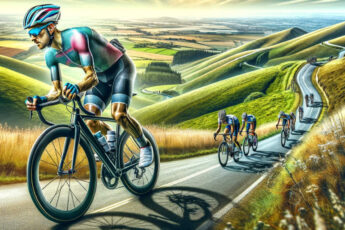
Last week, my lungs were crying out for mercy, gasping as if each breath were their last. This week, the script has flipped – it’s my legs that are screaming, each pedal stroke a fiery protest. This ebb and flow, a rhythmic dance between cardiovascular capacity and muscular endurance, is the heart and soul of improving Functional Threshold Power (FTP) in cycling.
Understanding the FTP Dance
Imagine your FTP as a dance floor where your cardio and muscle strength are the dancers. One week, you’re spinning the pedals with ease, muscles laughing in the face of resistance. Yet, your lungs are gasping, struggling to keep pace. This is the moment when your cardiovascular fitness is trailing behind your muscular endurance.
Fast forward a few weeks of dedicated training. Suddenly, it’s your muscles that are sending distress signals, begging for a breather, while your lungs are ready for another round. This shift is a classic example of the body’s remarkable ability to adapt, but not always in unison.
The Science Behind the Swing
This perpetual tug-of-war between cardio and muscle strength has roots in exercise physiology. When you push your limits, say by increasing your power output, your body responds in two primary ways:
- Cardiovascular Adaptation: Your heart and lungs work overtime to supply oxygen-rich blood to those hard-working muscles. Over time, with consistent training, your heart becomes more efficient, and your lung capacity increases.
- Muscular Adaptation: Meanwhile, your muscles undergo their transformation. Initially, they scream in protest – a mix of lactic acid build-up and the demand for more oxygen than your blood can supply. But give them time, and they adapt by enhancing their ability to use oxygen, store energy, and resist fatigue.
The Endless Cycle
This cycle of adaptation is like a dance – one partner catches up just as the other pulls ahead. It’s a dynamic, ever-changing relationship. When your cardiovascular system steps up, suddenly your muscular strength seems to lag. Give your muscles time to catch up, and soon your lungs are the ones struggling to match the pace.
Practical Tips for the Dance
- Balanced Training: Don’t just focus on power or endurance. A well-rounded training plan that alternates between high-intensity intervals and endurance rides can help both your heart and muscles adapt more harmonically.
- Recovery: Just as a dancer rests between performances, your body needs time to recover and adapt. Overtraining can lead to one system outpacing the other.
- Nutrition and Hydration: A dancer wouldn’t perform without proper fuel, and neither should you. Proper nutrition and hydration play a crucial role in both cardiovascular and muscular health.
Conclusion
The dance of improving FTP is a complex, beautiful interplay of bodily systems. It’s a reminder that our bodies are intricate machines, constantly adapting and evolving. This dance isn’t one to be won; it’s one to be embraced, enjoyed, and learned from. So lace up your dancing shoes, hit the pedals, and enjoy the rhythm of your own cycling journey.




Leave a Comment